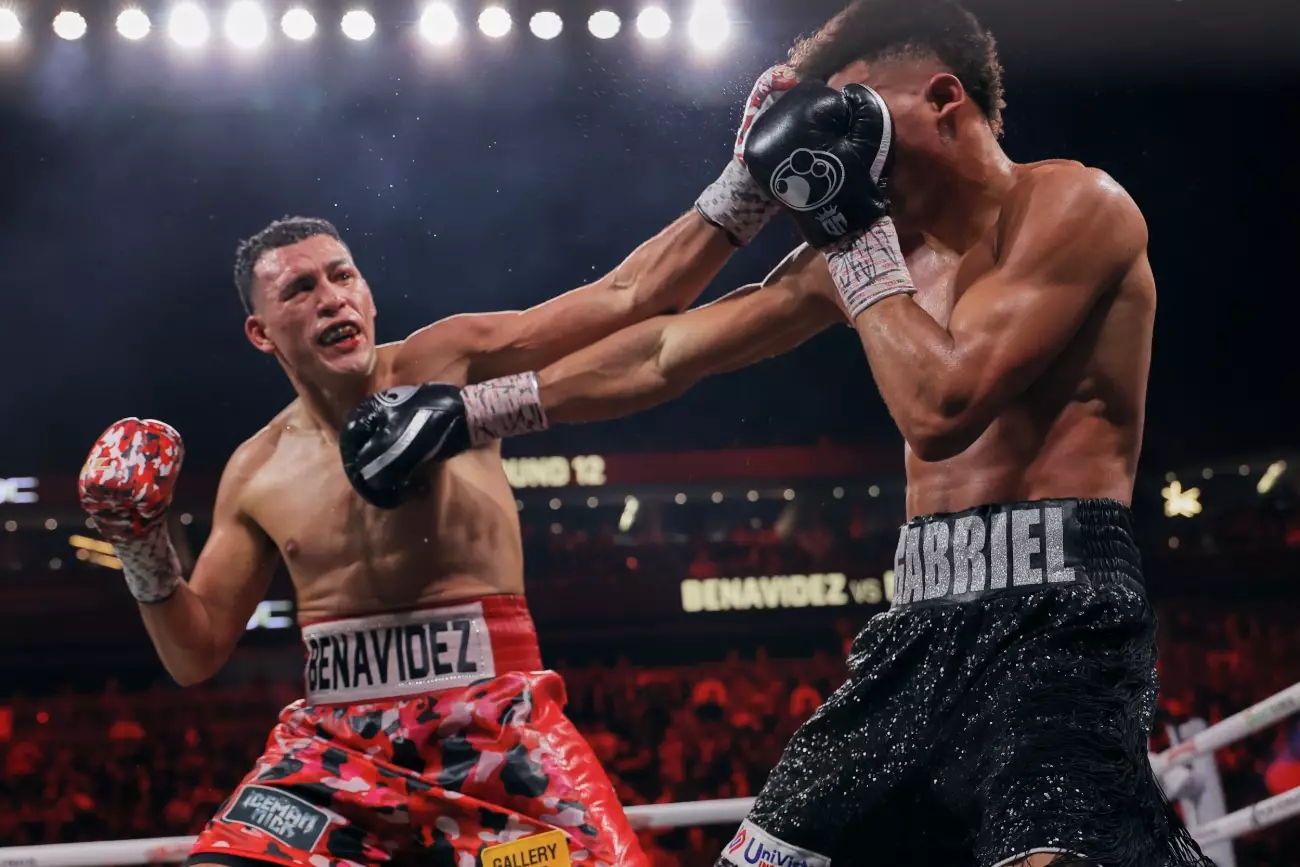The world of professional boxing is no stranger to controversy, and the recent bout between David Benavidez and David Morrell at T-Mobile Arena has ignited a firestorm of debate. This much-anticipated match not only showcased the resilience and skill of both fighters but also raised serious questions regarding judging standards and the integrity of scoring in boxing.
In a bout filled with intensity and high stakes, David Benavidez emerged victorious through a unanimous decision that left many scratching their heads. Both fighters entered the ring with impressive records—Benavidez at 30-0 and Morrell at 11-1—leading fans to expect a thrilling contest. However, the fight’s progression was anything but straightforward. The most dramatic moment came in the 11th round when Benavidez was knocked down by Morrell’s powerful right hand—a testament to Morrell’s fighting prowess and an alarming indicator of Benavidez’s vulnerabilities.
While a knockdown might traditionally signal a turning point, the bout swayed dramatically due to a controversial decision by the referee to dock Morrell a point for hitting after the bell. This unanticipated deduction, coupled with the judges’ scores of 115-111, 115-111, and 118-108, has raised eyebrows. Particularly striking was the wide margin of 118-108, which many have deemed an inaccurate reflection of the fight’s true dynamics.
The judges’ scores displayed a disconnect with the actual slipstream of the match, prompting concerns about whether their decisions were influenced by noise and crowd participation rather than the fighters’ actual performance. It’s a grave issue that speaks to the very foundation of boxing: the integrity and reliability of scoring. A judge’s capacity to remain impartial and educated during the high-pressure atmosphere of a boxing match is critical, and in this instance, it appears that the narrative shaped by the audience may have overshadowed the fighters’ skills.
Moreover, an analysis of the fight’s rounds suggests that Morrell demonstrated superior boxing technique and effective aggression. With round wins throughout the earlier and latter portions of the match, many observers feel he should have secured victory. There appears to be a systematic issue at play regarding how judges assess performance under duress, particularly regarding defensive maneuvers and scoring based on sheer aggression, even when it is less impactful.
The fallout from the Benavidez vs. Morrell fight goes beyond individual performance; it calls into question the future of such matchups and the need for transparency in the judging process. While Benavidez now looks ahead to potential bouts against prominent fighters like Artur Beterbiev or Dmitry Bivol, the crux of the matter remains: Morrell’s claim to a rematch is not simply a personal request but a necessary step for justice in boxing. It paves the way for reform, demanding dialogue about the criteria judges employ and the broader implications for fighters’ careers stemming from potentially flawed decisions.
The Benavidez vs. Morrell match shines a spotlight on the critical need for integrity in boxing judging. It underscores the importance of ensuring that fighters receive fair evaluations based solely on their performance in the ring. Only through addressing these concerns can we hope to restore faith in what has always been regarded as ‘the sweet science.’

